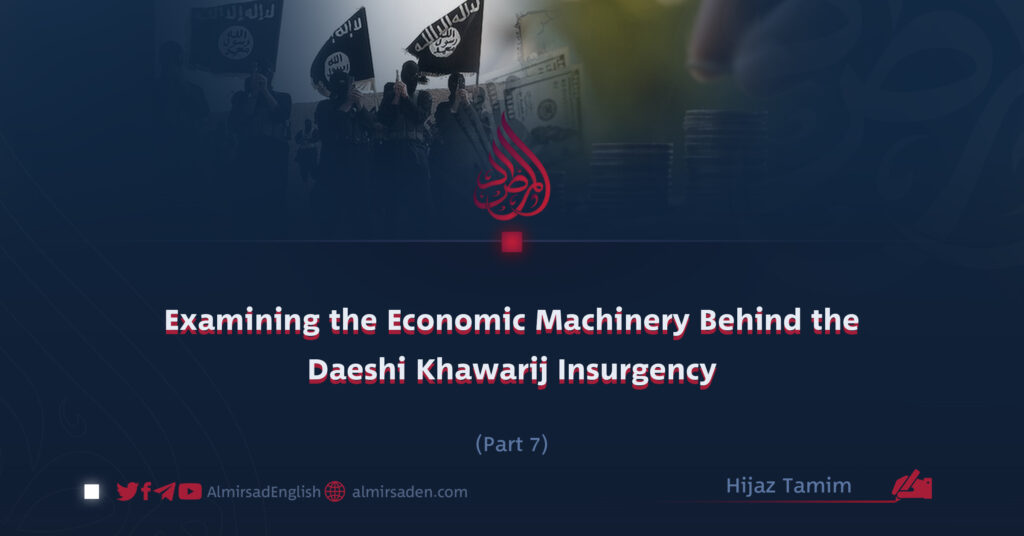Part 7
Author: Hijaz Tamim
Financial Contributions of Foreign Fighters
The involvement of foreign fighters in the ranks of the Daeshi Khawarij has not only amplified the group’s military strength but also significantly broadened its financial foundation. Research indicates that many of these individuals originate from economically advanced nations and have voluntarily allocated portions of their personal wealth to support the group’s operations.
This financial backing has been instrumental in sustaining ISIS’s military campaigns, acquiring equipment, disseminating propaganda, and administering captured territories. Countering this funding stream requires robust international cooperation, regulation of digital platforms, and stringent oversight of informal financial systems.
The Scale of Foreign Involvement
According to U.S. intelligence assessments, as of December 31, 2014, ISIS had recruited approximately 19,000 foreign fighters from over 90 countries. These individuals served in dual roles—as combatants on the battlefield and as financiers of the insurgency. Reports from Al Majalla and The Washington Post cite the following estimated numbers of foreign fighters from Western countries who joined ISIS and supported its activities both militarily and financially:
– France: ~1,700 fighters
– United Kingdom: ~760 fighters
– Germany: ~760 fighters
– Belgium: ~470 fighters
– Sweden: ~300 fighters
– United States: ~250 fighters
Mechanisms of Foreign Financial Support
ISIS has utilized a variety of methods to obtain financial contributions from foreign operatives and sympathizers:
1. Personal Wealth Donations
Many foreign fighters allocate a share of their personal assets—whether in the form of cash, precious items, or property—to support ISIS’s mission.
2. Collection of Zakat and Charitable Funds
ISIS exploits the Islamic obligation of zakat (Islamic alms) as a core element of its financial system. Foreign sympathizers collect these funds from affluent individuals in their native countries and forward them to the group.
3. Digital Financial Platforms
Adapting to modern financial technologies, foreign fighters use cryptocurrencies (e.g., Bitcoin), PayPal, and other digital platforms to channel funds to ISIS, evading conventional banking oversight.
4. Informal Financial Networks (Hawala Systems)
ISIS extensively uses unregulated financial systems like hawala to transfer funds across borders. A notable example includes the monthly remittance of up to $20,000 to the Al-Hol camp in Syria via Turkey, primarily for the support of ISIS affiliates and their families.
Notable Cases of Foreign Financial Contributors
Several high-profile cases illustrate the mechanisms and magnitude of foreign financial involvement:
– Muhammad Azam Jehipa – $185,000
A resident of Virginia, USA, Jehipa transferred $185,000 to ISIS to help revive its operations, including the support of fighters and the extraction of women from the Al-Hol camp. He was later apprehended and sentenced to 30 years and 4 months in a federal prison.
– Muhammad Al-Shanawi – $8,700
An American national who generated $8,700 through fraudulent eBay sales and laundered the funds via PayPal, subsequently transferring them to ISIS for operational use.
– Mansouri Manouchehri – $70,000
A 33-year-old Tajik national was arrested in Brooklyn, New York, on February 26, 2025, for transferring approximately $70,000 between December 2021 and April 2023 to ISIS affiliates in Turkey and Syria.
– Monthly Transfers to Al-Hol Camp – $20,000
A U.S. Department of Defense report confirmed that ISIS regularly sent up to $20,000 per month to the Al-Hol camp through informal channels, including hawala, cash couriers, and cryptocurrency. These funds were directed to sustain ISIS members and their families within the camp.
Strategic Impacts of Foreign Financial Support
The continued financial contributions from foreign actors have yielded several strategic advantages for ISIS, including:
1. Sustaining Financial Stability
2. Expanding Military Operations
3. Enhancing Propaganda Capabilities
4. Widening Transnational Networks
5. Empowering the Khorasan Branch (ISIS-K)
6. Supporting Clandestine Operations
7. Procuring Weapons and Equipment
8. Paying Fighters’ Salaries
9. Governing Occupied Territories
10. Escalating Violence and Casualties
11. Heightening Global Security Threats
The financial infrastructure sustaining the Daeshi Khawarij insurgency is deeply intertwined with transnational support—both ideological and monetary. The role of foreign fighters as financiers constitutes a core pillar of ISIS’s global threat. Confronting this challenge demands coordinated international action: enhanced financial intelligence, stricter regulation of digital platforms, and the dismantling of informal networks that facilitate terror financing. Only through such collective efforts can the economic lifelines of extremism be decisively severed.
